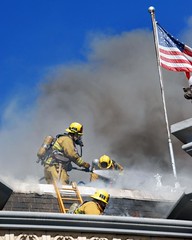High-tech job growth has sparked the Bay Area's rebound from the recession, but experts warn that the region's economy could stall unless other industries start to hire.
Over the first nine months of 2011, the technology industry added 26,200 workers, 65 percent of all the jobs created in the Bay Area, this newspaper's analysis of data compiled by state officials and Beacon Economics shows. High-tech jobs account for 18 percent of the Bay Area's workforce.
"If the Bay Area jobs recovery doesn't broaden, it is in danger of fizzling out completely," said Scott Anderson, senior economist with Wells Fargo Bank.
The key, according to a number of economists, would be a recovery in the long-troubled housing industry.
"We need a normal housing market," said Jeffrey Michael, director of the Business Forecasting Center at University of the Pacific in Stockton. "We have to have a construction industry that has a pulse."
Much in the way the financial industry bolsters New York City's economy, real estate is an economic bulwark for the Bay Area. Real estate and high-tech produce strong ripple effects throughout the economy, creating many jobs in many industries.
"Technology workers are more likely to buy a home, make home improvements or go to the spa," said Jon Haveman, chief economist with the Bay Area Council's Economic Institute. "They will dine out more often. They spend more at the mall."
Much the same is true with the housing industry. Rising demand spurs construction of new homes and apartments. Newly purchased houses are filled with furniture, often new. Backyards receive upgrades, with the help of frequent trips to the hardware store or garden supply shop. Mortgage providers hire loan agents. Commissions for real estate agents swell. Those virtuous cycles vanished when the housing bubble popped.
The employment gains in the Bay Area housing sector during the peak year of 2005, compared with now, illustrate the problem. In the first nine months of 2011, Bay Area construction companies added 3,200 jobs. Over the first nine months of 2005, construction gained 4,700 jobs. The difference is akin to a Solyndra solar plant. The contrast is even starker in the finance, insurance and real estate sectors, which have numerous jobs linked to housing. In the first nine months of 2011, Bay Area financial businesses shed 1,500 jobs. During the same nine months of 2005, financial companies added 3,100 jobs. That 4,600-job swing equates to a NUMMI factory.
"We don't need construction to go all the way back to the 2005 levels," Michael said. "But it has to get off the floor, to improve from these abnormally low levels."
For now, the thousands of new jobs in construction are a welcome sign.
"Things are looking a little better," Brent Judd, a project supervisor for Tilton Pacific, said of local construction activity. "It's not dramatic. But things have stabilized."
Tilton Pacific is the general contractor for a new shopping center in Pleasanton that will be anchored by a big Safeway store. Joining construction in the upswing are transportation and warehousing, which gained 9,500 jobs, and retail, which added 2,300 jobs. Even the battered manufacturing sector rose by 3,900 jobs.
"We are hiring people all the time," said Nathan Tyson, an engineer at Chevron's refinery in Richmond.
He started a few years ago as a tank turnaround engineer for the Richmond refinery. He now works as a design engineer at the plant.
The improvement in retail is significant because it reflects a stronger job market in other sectors. If residents are working, they are more likely to shop. New entrants into the supermarket sector, coupled with Safeway's store expansions and revamps, also may have spurred some hiring.
Fresh & Easy and Sprouts Farmers Markets have been opening new stores. REI opened a new store in Dublin. Auto dealers have been growing. Whole Foods and Sunflower Farmers Markets have announced, or recently opened, new stores in the Bay Area.
Safeway held a jobs fair recently for its new Pleasanton store. The supermarket estimated that 600 people showed up in person and 1,000 applied online.
"We ended up hiring 240 employees," said Susan Houghton, a spokeswoman for Safeway.
Despite the hopeful signs, weaknesses persist in the Bay Area -- meaning it will take years to fully recover. Arts and entertainment, hotels and dining and beverage establishments, along with government, have shed jobs lately.
"It's going to take a certain amount of time to bleed off the excess debt in the economy because of the credit and housing bubbles," said Michael Yoshikami, chief investment officer with Walnut Creek-based YCMNet. "We won't see a meaningful jobs rebound for a few years."
Article any source
 While the exact cause remains under active investigation, the fire was determined to be "accidental" in nature. Dollar loss and damage estimates were not yet available.
While the exact cause remains under active investigation, the fire was determined to be "accidental" in nature. Dollar loss and damage estimates were not yet available.



































